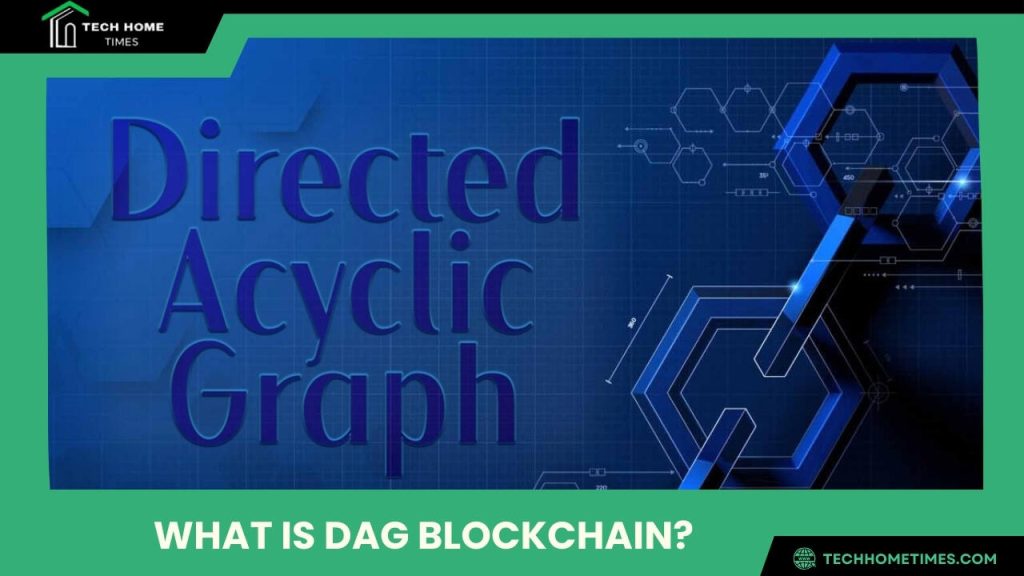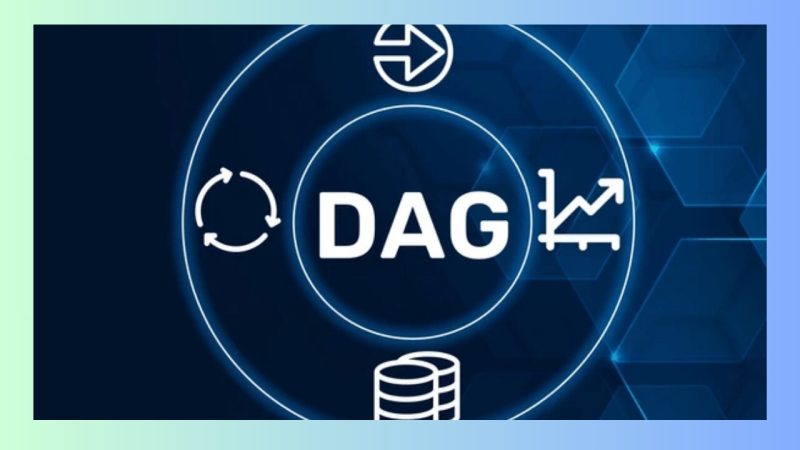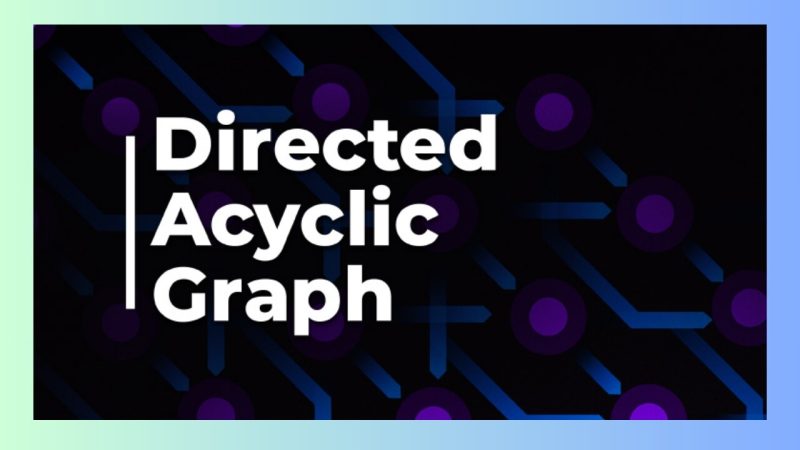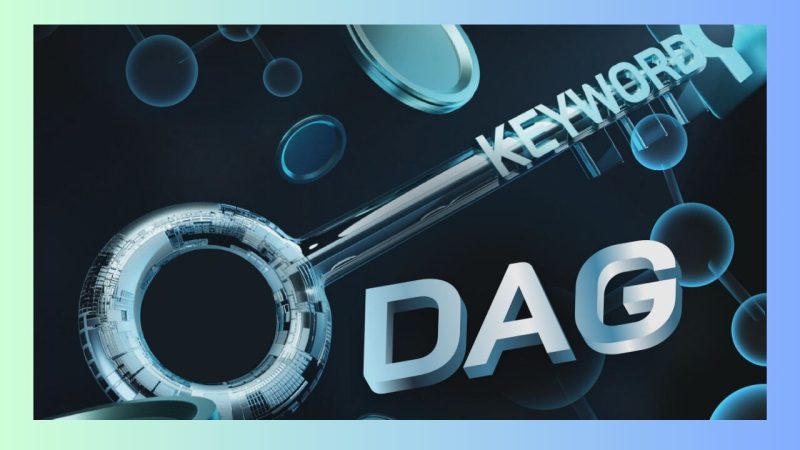What is DAG Blockchain? A detailed guide for new investors

What is DAG Blockchain?
DAG Blockchain is an emerging concept in the cryptocurrency world, offering an alternative solution to the problems of traditional blockchain technology. With its ability to process transactions quickly and cost-effectively, DAG is becoming the core technology for many cryptocurrency ecosystems, especially in applications that require high speed and efficiency. So, what is DAG Blockchain and why is it receiving so much attention? Let’s explore in the article below.
Contents
What is DAG Blockchain?
DAG Blockchain is a data structure fundamentally different from traditional blockchain. While traditional blockchain uses blocks linked sequentially to store transactions, DAG doesn’t rely on these blocks. Instead, transactions are stored in a directed acyclic graph, where each transaction can directly reference previous ones.
This means that in DAG, each transaction doesn’t have to wait its turn to be confirmed, as transactions can be validated simultaneously without encountering congestion. This structure helps reduce transaction costs while improving performance and speed. A prime example of DAG in cryptocurrency is IOTA, with its Tangle protocol, optimizing transactions in the IoT (Internet of Things) environment.
Additionally, the lack of fixed blocks helps DAG Blockchain minimize the issue of “blockchain congestion” when there are too many transactions to process in a short time. DAG provides a more optimized mechanism where the system can handle countless transactions without relying on resource-intensive protocols like Proof of Work (PoW).

How does DAG Blockchain work?
DAG Blockchain operates on a simple yet effective principle: transactions are executed and validated independently, but they are linked to previous transactions to form an immutable chain. Each transaction in the system not only references one previous transaction but can reference multiple others, helping to lighten the network load.
Importantly, in DAG networks like IOTA, users do not have to pay transaction fees for each transaction as in traditional blockchain, helping to reduce costs. Transaction validation is performed through a “witnessing” mechanism by the nodes participating in the network, increasing speed and reducing network congestion. This makes DAG ideal for applications requiring quick transaction processing, such as microtransactions or transactions between devices in an IoT system.
Similar to blockchain, DAG Blockchain also requires certain security mechanisms to prevent fraud. Although transactions in DAG can be validated quickly, the system still needs to ensure decentralization and security throughout its operation.
Applications of DAG Blockchain in reality
IOTA: Improving IoT transactions and microtransactions
IOTA is one of the most prominent examples of DAG Blockchain in practice. With its Tangle protocol, IOTA does not use traditional blockchain but applies DAG Blockchain to solve issues of congestion and high costs in traditional payment networks. IOTA is specifically designed for Internet of Things (IoT) applications, where millions of devices need to communicate and exchange data quickly and efficiently.
One key feature of IOTA is the absence of transaction fees. Without blocks and miners, IOTA can perform transactions at almost zero cost, making it highly suitable for small transactions and microtransactions. This makes IOTA an ideal solution for IoT applications, which need to process millions of transactions at high speed and low cost.
Additionally, IOTA opens up potential for decentralized payment systems in the future, particularly in areas like autonomous vehicles, smart device transactions, and many other IoT applications.

U2U Chain: Enhancing scalability and security
U2U Chain is an emerging example of a project utilizing DAG technology to address scalability issues in traditional blockchain. As a Layer 1 blockchain serving the DePIN (Decentralized Physical Infrastructure Network) ecosystem, U2U Chain uses DAG Blockchain to optimize transaction speed and data processing capabilities of the network’s subnets.
U2U Chain focuses on applications in fields such as IoT, wireless networks, and decentralized storage, where large transaction volumes need to be handled without congestion. With DAG Blockchain, U2U Chain ensures that transactions are validated simultaneously and do not have to wait for the next block, as in traditional blockchain. This boosts network performance and reduces transaction costs, creating favorable conditions for dApps (decentralized applications) and users within the DePIN ecosystem.
Casper: Enhancing security and scalability
Casper, another noteworthy blockchain project, is researching and developing a DAG-based system to solve speed and scalability issues in current blockchain networks. Although Casper primarily uses mechanisms like Proof of Stake (PoS), integrating DAG into its protocol is seen as a major step forward in improving transaction processing and reducing network congestion.
Casper focuses on applications in finance, business, and government organizations, where rapid transaction processing and high security are essential. DAG in Casper optimizes scalability and reduces transaction fees, making it an attractive option for decentralized finance (DeFi) applications and traditional financial services.
Furthermore, using DAG Blockchain enhances the security of the network because transactions cannot be altered once validated, thanks to the structure of the directed graph. This is particularly crucial for applications that require high security levels, such as financial transactions or smart contracts.
Nano: Instant transactions with Near-Zero fees
Nano is one of the most prominent blockchain platforms using DAG. Rather than using a single blockchain, Nano employs a block-lattice model, where each user has their own separate blockchain, known as a “block.” Transactions are made between these separate blocks, allowing transactions to be validated immediately without waiting in a shared transaction chain.
Nano provides near-instant transaction speeds and transaction costs that are almost zero, making it an ideal choice for microtransactions or small payment systems. Nano is used in cases such as online store payments, fast peer-to-peer transfers, or transactions on platforms requiring high speed and low cost.
While not entirely using DAG Blockchain in the traditional sense, Nano does leverage several principles of DAG to create an efficient and cost-effective network system. With its scalability and high flexibility, Nano is emerging as an optimal choice for quick and low-cost payment applications.
Comparing DAG Blockchain with traditional Blockchain
Structure and operation
In traditional blockchain systems, transactions are grouped into blocks. Each block contains a set of transactions and is linked to the previous block to form an immutable chain. To add a new block to the chain, miners must solve complex problems (for Proof of Work blockchains) or participate in the consensus process (Proof of Stake). This leads to transaction delays as each transaction has to wait for the new block to be confirmed.
In contrast, DAG Blockchain doesn’t use blocks but instead uses a directed graph, where each transaction is considered a point (node) and new transactions are linked to older ones through directed connections. In DAG, transactions are validated directly with previous transactions without needing to wait for a new block, making the transaction process faster and more efficient. This system doesn’t require miners or complex consensus mechanisms, and instead, each node in the network validates and confirms transactions, creating a decentralized network with no transaction fees.

Speed and scalability
One of the standout advantages of DAG Blockchain over traditional blockchain is transaction speed and scalability. With blockchain, every transaction must be confirmed in a specific order, and this process can become congested if too many transactions occur simultaneously. This reduces blockchain performance, especially as the number of users and transactions increases.
DAG Blockchain, on the other hand, does not have blocks and is not limited by the speed of creating new blocks, so it can process transactions quickly without congestion. Since each transaction can be processed simultaneously without having to wait, DAG scales better, making it ideal for applications requiring the handling of large transaction volumes in a short amount of time, such as microtransactions or IoT systems.
Transaction costs and energy efficiency
Another advantage of DAG Blockchain is the low or near-zero transaction fees. In traditional blockchain systems, each transaction usually requires a transaction fee, especially in high-transaction networks like Bitcoin or Ethereum, where transaction fees can become very high during network congestion.
In DAG Blockchain, since there are no miners or expensive consensus mechanisms, transaction costs are minimized. Transactions can be performed without fees or with very low costs, making DAG an ideal solution for low-value transactions or those in IoT systems, where large numbers of transactions and high frequencies are common.
Furthermore, DAG systems are also more energy-efficient than traditional blockchains that use Proof of Work (PoW). Blockchains like Bitcoin require miners to use large amounts of electricity to solve complex cryptographic problems, while DAG does not require this process, resulting in significant energy savings.
Security and decentralization
While DAG Blockchain has many advantages in speed, cost, and scalability, traditional blockchain still has a significant edge in terms of security and decentralization. Blockchain networks like Bitcoin and Ethereum have a wide network of miners and consensus nodes, which help secure the network against attacks and strengthen transaction safety. Each block in the blockchain is tightly linked to the previous one, forming an immutable chain, making it very difficult to alter or attack transactions.
However, while DAG Blockchain is a decentralized system, it may not achieve the same level of decentralization and security as traditional blockchain. Without blocks and complex consensus mechanisms like Proof of Work or Proof of Stake, some DAG systems may face issues related to power centralization or attacks from intruders, especially in smaller networks or when there are not enough participants to confirm transactions.
Thus, DAG Blockchain Blockchain has proven to be a powerful solution for addressing speed and scalability issues that traditional blockchain faces. Although there are still challenges to overcome, DAG is being successfully applied in major projects such as IOTA, U2U Chain, Nano, and Casper, delivering significant benefits in cost and performance.
With continuous development, DAG Blockchain could become the dominant technology in the cryptocurrency industry, especially in applications requiring fast transaction processing and high scalability. Monitoring the progress of DAG-based projects is essential for those interested in the future of blockchain and financial technology.
Tech Home Times hopes that the information we’ve provided in this article has helped you understand the term “What is DAG Blockchain?” and the real-world applications of this new technology platform. We wish you success!







